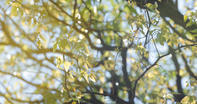Heating Up Each Decade
South Africa is already warming up. In 2004, scientists looked at records from 26 weather stations across the country and calculated about a half degree average increase since 1960 (specifically, an average 0.13°C increase per decade), with both minimum and maximum average temperatures reflecting the trend.

During the period from 1960 to 2003, the trend showed fewer cooler days and more warm days. The signal of climate change is showing itself more strongly in the Western Cape, with about double the average increase in temperature, a phenomenon which our climate change scientists are unable to explain. Predicting shifts in rainfall patterns in South Africa is much less certain.
A Warmer Cape Region
By the end of this century, southern Africa will be an average of 3.4°C warmer, according to the 2007 Intergovernmental Panel on Climate Change (IPCC) reports. This confirms earlier studies which first a 1 to 3°C rise in average temperature by 2050, relative to the average temperatures between 1960 to 1990.
The actual increase will vary between regions, with the interior of the country expected to warm more that the coast because of the moderating influence of the sea – for instance, the Northern Cape could see an increase of over 4.5°C. Meanwhile higher altitudes will warm less than lower lying areas. The Western Cape can expect an increase of about 1.5°C along the coast and 2°C to 3°C inland of the Cape Fold Mountains by 2050.
Spring Fever

“Season creep” – that’s the term used to describe how the winter chill began to spill over into spring during the Little Ice Age, shortening the growing season and pushing down crop yields. “Season creep” is also expected for southern Africa, but in a different direction – this is the season that will warm the most, and the spring rains will probably be delayed.
The greatest seasonal drying will happen in spring (half the total annual reduction in rainfall will happen from September and November in the summer rainfall parts of the region). This could have devastating consequences for crops and any seedlings, whether wild or farmed, in rain fed (that is, unirrigated) parts of the country.
West and East Climate Changes

Hotter and drier in the West: The tropical west, Namibia, Botswana, the Northern Cape and the Western Cape get drier in spring and summer, according to some of the models. Hotter and wetter in the East – but still overall drying: A warmer atmosphere can hold more water vapour, and a warmer world means more evaporation – but that can only stay in the atmosphere for so long, meaning it has to translate into rain, snow or hail at some point. The eastern parts of southern Africa may well get wetter during summer.
This means an increase in intensity of high-rainfall events in places. Storms moving up onto our east coast from the Indian Ocean will probably be more intense and carry more rain with them. The Drakensberg catchment area, and the “convective region of the central and eastern plateau” will see an increase in summertime rainfall.
The balance between water coming into the system and water going out of the system will be shifted towards a drying trend, overall, as heat stress and changed rainfall will probably result in greater runoff, evaporation and drying out of soils. The regional Millennium Ecosystem Assessment states that for every 1°C that temperature increases, evaporation rate rises by a 5 percent.
Western Cape
The storm tracks which bring the Cape its winter rain will continue shifting towards the pole, taking the rain out to sea instead of allowing it to fall on the continent. The IPCC modellers predict extreme drying in the southwest during winter. Since this is the rainy season for the region, which has the tremendously valuable Cape Floral Kingdom as well as accounts for 50 percent of the country’s export agriculture, this “desertification” trend has serious implications for the province.
The earliest modelling for the Cape predicted an average 25 percent loss of winter rainfall by 2050. Even though the overall trend for the Western Cape is that of drying, particularly during winter, it will still see more rain falling in late summer in the eastern region of the Western Cape. Surviving the extremes: The frequency and intensity of droughts, floods and heatwaves will be amplified by rising temperatures across the country.
By Leonie Joubert